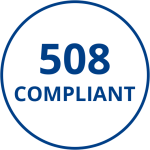The Ohio Space Grant Consortium (OSGC) was established in 1989 (along with the original Ohio 12-member universities) by the United States Congress, and is part of the National Space Grant College and Fellowship Program known as “Space Grant” administered through the Office of STEM Engagement at NASA Headquarters. There are 52 consortia, one in each state, the District of Columbia, and the Commonwealth of Puerto Rico. Space Grant is a unique national network of colleges and universities working to expand opportunities for Americans to understand and participate in NASA’s aeronautics and space projects by supporting and enhancing Science, Technology, Engineering, and Mathematics (STEM) through scholarships, fellowships, higher education, research infrastructure, pre-college (K-12), and informal education public outreach efforts. The Space Grant national network includes over 1,000 affiliates from universities, colleges, industry, museums, science centers, and state and local agencies.

The OSGC is currently composed of 26 institutions of higher learning (20 universities and 6 community colleges), NASA Glenn Research Center (GRC), the Air Force Research Laboratories (AFRL), and various education outreach partners. The OSGC Program Office is located at the Ohio Aerospace Institute (OAI) in Cleveland, Ohio.
The Vision of the Ohio Space Grant Consortium is to continue Ohio’s legendary aviation history from the Wright Brothers pioneer beginnings to a future filled with endless exploration and discovery for students, educators, and all Ohioans.
The Ohio Space Grant Consortium’s Mission is to provide opportunities for all Ohioans to engage in NASA Science, Technology, Engineering, and Mathematics (STEM)-related research, education, and public service programs to foster a well-prepared, future technical workforce for NASA and the Nation.
The OSGC has five goals to accomplish their mission and in support of NASA’s and the National Space Grant Program’s Goals and Objectives for FY2020-2024. The OSGC Strategic Plan, Vision, Mission, Goals, SMART Objectives, and Metrics were redefined, approved and implemented by the OSGC Executive Committee in September, 2019. The specific Goals of the program, followed by the SMART Objectives, and Metrics are as follows:
Goal 1 – Develop and train a future STEM technical workforce in Ohio and the Nation.
Objectives:
1.1 Engage students in STEM research projects through internships with NASA / Ohio Aerospace Institute (OAI), OSGC’s Lead Institution / Industry / University / Collaborations with Other Space Grants under the direction of a mentor that are aligned to NASA priorities and are related to one of the 5 Mission Directorates: 1) Aeronautics Research Mission Directorate (ARMD); 2) Space Operations Mission Directorate (SOMD); 3) Exploration Systems Development Mission Directorate (ESDMD); 4) Science Mission Directorate (SMD); and 5) Space Technology Mission Directorate (STMD).
1.2 Engage students in STEM research projects through Graduate Research Fellowships and Undergraduate Research Scholarships under the direction of a mentor that are aligned to NASA priorities and are related to one of the 4 Mission Directorates as defined in Objective 1.1. The following define these opportunities:
· NASA Internships and Fellowships (NIF) and undergraduate research scholarships
· Internships [with NASA Centers (focus on Glenn Research Center), OAI, industry, universities, and other Space Grants]
· Competitive Undergraduate Scholarship and Graduate Fellowship programs at Ohio Affiliate universities.
· All student NIF awardees (Internships, Fellowships, and Scholarships) will work on a mentor-directed, NASA-related research project that is aligned to one of the 4 Mission Directorates.
Metrics:
1. Annually award competitive internships to undergraduate and graduate students at NASA Centers, OAI, industry, universities, and other Space Grants during the Summer (10 weeks), or Fall, Spring Semesters (16 weeks).
2. Annually award competitive graduate fellowships and undergraduate scholarships at university Affiliates with a STEM research component under the direction of a mentor.
3. At least 90 percent of annually supported students will graduate with a STEM degree from an Ohio University Affiliate.
4. Longitudinally track all students receiving a “Significant” award that identifies the next step. All internships, fellowships, and scholarships are classified as “Significant” awards.
Goal 2 – Engage faculty and students to participate in hands-on STEM research activities.
Objectives:
1.1 Engage faculty and students in STEM research through three OSGC competitive grant opportunities that are aligned to NASA priorities within the 5 Mission Directorates: 1) Aeronautics Research Mission Directorate (ARMD); 2) Space Operations Mission Directorate (SOMD); 3) Exploration Systems Development Mission Directorate (ESDMD); 4) Science Mission Directorate (SMD); and 5) Space Technology Mission Directorate (STMD). The following define these opportunities:
Metrics:
1. A minimum of 90 percent of the students receiving a SICHOP grant will report they are more likely to pursue a STEM career or an advanced STEM degree (based on results in Student Principal Investigator’s final report, presentations at conferences, and number of publications).
2. A minimum of 90 percent of faculty receiving a grant will report increased research capacity and competency in their field as a result of the award (based on results in Principal Investigator’s final report, presentations at conferences, and number of publications).
Goal 3 – Promote and support STEM activities in Ohio.
Objectives:
1.1 Develop collaborations with Affiliate institutions and other organizations to recruit students and faculty to participate in OSGC activities that are aligned to one of the 5 Mission Directorates: 1) Aeronautics Research Mission Directorate (ARMD); 2) Space Operations Mission Directorate (SOMD); 3) Exploration Systems Development Mission Directorate (ESDMD); 4) Science Mission Directorate (SMD); and 5) Space Technology Mission Directorate (STMD). The following define these opportunities:
Goal 4 – To increase Ohio K-12 student and teacher STEM awareness by access to educational and career/professional development opportunities.
Objective:
1.1 Engage faculty and students through the OSGC competitive K-12 Teacher Mini-Grant program or professional development opportunities that are aligned to NASA research priorities within one of the 5 Mission Directorates: 1) Aeronautics Research Mission Directorate (ARMD); 2) Space Operations Mission Directorate (SOMD); 3) Exploration Systems Development Mission Directorate (ESDMD); 4) Science Mission Directorate (SMD); and 5) Space Technology Mission Directorate (STMD). The following define these opportunities:
OSGC K-12 Teacher Mini-grants
Education Scholarships
Exposure to NASA Education materials
Teacher Training Programs and Workshops
Metrics:
1. At least 90 percent of K-12 teachers/students receiving a mini-grant will report increased knowledge and improved pedagogy in NASA and STEM content as a result of the activity (based on results of Post-Program Questionnaires and Final Report).
2. At least 90 percent of K-12 teachers will include NASA educational materials in a future lesson plan as a result of receiving a mini-grant (based on Final Report).
3. At least 90 percent of supported K-12 teachers will report increased knowledge in NASA and STEM content as a result of professional development activity (based on Final Report)
Goal 5 – To inspire an interest in STEM through informal educational community activities for all Ohioans.
Objective:
1.1 Support programs through the OSGC competitive Informal Education Grant opportunity that are aligned to NASA research priorities within one of the 5 Mission Directorates: 1) Aeronautics Research Mission Directorate (ARMD); 2) Space Operations Mission Directorate (SOMD); 3) Exploration Systems Development Mission Directorate (ESDMD); 4) Science Mission Directorate (SMD); and 5) Space Technology Mission Directorate (STMD). The following define these opportunities:
OSGC Informal Education grants
Metric:
1. Program participants will indicate increased STEM awareness and knowledge of NASA’s mission (based on results of Post-Program Questionnaires and Final Report).
Click here to view current OSGC Fact Sheet.
Ohio Space Grant Consortium
22800 Cedar Point Road | Cleveland, OH 44142
Phone: (440) 962-3099 | Fax: (440) 962-3200 | E-mail: osgc@oai.org

© All Rights Reserved